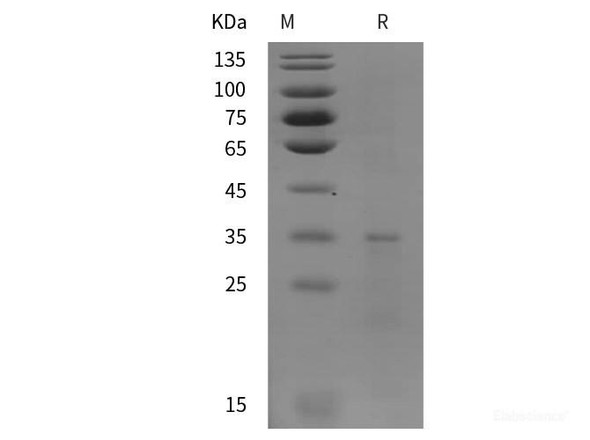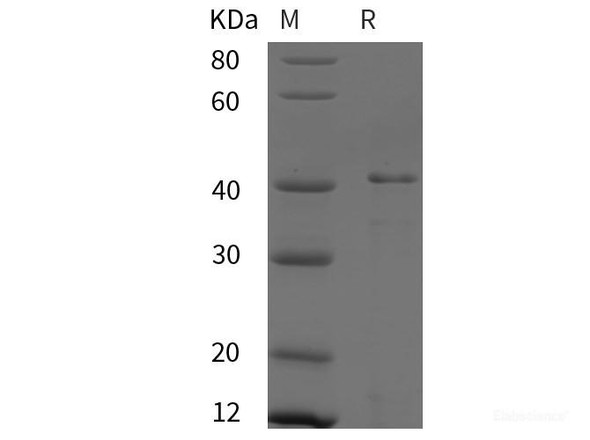Human PODXL Recombinant Protein (SUMO,His tag)
- SKU:
- RPES5472
- Product Type:
- Recombinant Protein
- Species:
- Human
Frequently bought together:
Description
| Product Name: | Human PODXL Recombinant Protein (SUMO,His tag) |
| Product Code: | RPES5472 |
| Size: | 20µg |
| Species: | Human |
| Expression Host: | E.coli |
| Synonyms: | PCLP, PCLP1, PCLP-1, PCLPGCTM-2 antigen, PCpodocalyxin, POD XL, Podocalyxin, Podocalyxin-like protein 1, podocalyxin-like, PODXL |
| Mol Mass: | 34.21 kDa |
| AP Mol Mass: | 32 kDa |
| Tag: | N-SUMO-His |
| Purity: | > 95 % as determined by reducing SDS-PAGE. |
| Endotoxin Level: | Please contact us for more information. |
| Bio Activity: | Testing in progress |
| Sequence: | Ala 220-Ile 431 |
| Accession: | O00592 |
| Storage: | Generally, lyophilized proteins are stable for up to 12 months when stored at -20 to -80°C. Reconstituted protein solution can be stored at 4-8°C for 2-7 days. Aliquots of reconstituted samples are stable at < -20°C for 3 months. |
| Shipping: | This product is provided as lyophilized powder which is shipped with ice packs. |
| Formulation: | Lyophilized from sterile PBS, pH 7.4. Normally 5 % - 8 % trehalose, mannitol and 0.01% Tween80 are added as protectants before lyophilization. Please refer to the specific buffer information in the printed manual. |
| Reconstitution: | Please refer to the printed manual for detailed information. |
| Background: | Podocalyxin (PODXL), also known as Podocalyxin-like protein 1 (PCLP-1), is a heavily glycosylated transmembrane sialoprotein in the CD34 and Endoglycan family.Podocalyxin is expressed on glomerular and vascular endothelial cells, neurons, hematopoietic, mesenchymal, and cardiac stem cells, and metastatic carcinoma and glioblastoma tumor cells. A soluble form of Podocalyxin can be released into the urine of women with pre-eclampsia. Podocalyxin promotes platelet activation, neurite outgrowth, branching, and synaptogenesis, homing of hematopoietic progenitor cells to the bone marrow and spleen, and engraftment of mesenchymal and cardiac stem cells into ischemic heart and kidney. Its interactions with L-Selectin and E-Selectin mediate the tethering of lymphocytes and metastatic tumor cells to the vascular endothelium. |










